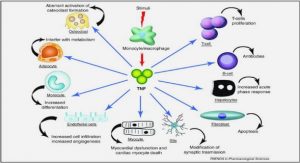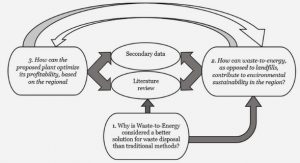Get Complete Project Material File(s) Now! »
Structural Adjustment Programmes: The Introduction of Cost Sharing
The first case of student unrest related to this sub-theme recorded at Moi University during the period under study (1985-2009) occurred in 1991 as a reaction by students to the government‟s announcement of its decision to adopt the recommendations of the World Bank under the Structural Adjustment Programme. The wave of student protest was not confined to Moi University alone, but it affected all the public universities which led to the widespread destruction of property and closure for over seven months (Interviews, No. 3, No. 13 and No. 17, Moi Eldoret, June 2012). Kenya was the first country in Sub-Saharan Africa to receive Structural Adjustment loans. These loans came with conditions aimed at imposing a free market policy on developing countries in order to create a conducive climate for foreign investment (Chacha, 2004, Sammoff and Carrol 2004). The conditions included “eliminating trade and investment regulations, boosting foreign exchange earnings by promoting exports and reducing government deficits through cuts in spending” (Chacha, 2004:97). Public spending on health, education and food subsidies were targeted in the cuts. University education in Kenya during the first ten years of its independence (1963-74) was free in the sense that it was fully financed by the government from public funds. Funding covered all aspects of university education, including tuition, books and stationery, accommodation and out of pocket allowances for the students. Due to budgetary constraints, the government introduced a revolving loan scheme in 1974 which benefited all students at the university. This fund was, however, inefficiently managed and the rate of recovery was so poor that it was more or less a grant (Chacha, 2004; Nafukho, 2004; Mwinzi, 2004).
Frustration and Disillusion with University Education
As seen elsewhere in this study, during the 1990suniversity students became frustrated and highly disillusioned with higher education as a consequence of several factors. These factors include the introduction of PSSP; the degradation of welfare standards; rigid university programmes and admission criteria; and the diminished chances of employment after graduation (Vice-Chancellor‟s Committee, 2002; Interviews No. 9 and 13, May and July 2012). All these factors combined to create a university student who was so disillusioned with higher education that the numerous protests that rocked the university gave these students the perfect opportunity to release their pent-up anger and frustration against the system by their destructive behaviour. It is the argument of this study that the frustration and disillusion of the university students compounds the effects of deindividuation and, therefore, it is maintained that this is one of the factors that occasions the deindividuated state. In other words, apart from the factors, such as anonymity; diffused responsibility; group membership and size; and aroused frustration among the group members, there is also a significant factor that brings about deindividuation that is associated with extreme collective behaviour.
CHAPTER 1: BACKGROUND TO THE STUDY
1.1 Introduction
1.2 Rationale
1.3 Argument
1.4 Breakdown of Chapters
CHAPTER 2: LITERATURE REVIEW
2.1 Introduction
2.2 Higher Education in the Global Context
2.3 Higher Education in Africa
2.4 The Impact of Structural Adjustment Programmes on African Higher Education
2.5 Higher Education in Kenya
2.6 Structure of Higher Education in Kenya
2.7 Organizational Dynamics
2.8 Theoretical Framework
2.9 Conclusion
CHAPTER 3: RESEARCH METHODOLOGY
3.1 Introduction
3.2 The Case Study Approach
3.3 Literature Review
3.4 Document Analysis
3.5 Interviews
3.6 Data Analysis
3.7 Challenges Encountered During the Study
CHAPTER 4: HISTORICAL DEVELOPMENT OF HIGHER EDUCATION IN KENYA AND AT MOI UNIVERSITY
4.1 Introduction
4.2 Higher Education in Kenya: A Brief History
4.3 The Commission for Higher Education
4.4 Joint Admission Board
4.5 Student Enrolment Growth Rates
4.6 Student Enrolment
4.8 Annual Expenditure per Student
4.9 Moi University: A Brief History
4.10 Constituent Colleges and Campuses
4.11 Governance of Moi University
4.12 Student Representation and Student Leadership
4.13 Schools
4.14 Quality Control
4.15 Significant Historical Developments
4.16 Thematic Classification
4.17 Conclusion
CHAPTER 5: EXPONENTIAL GROWTH: A CRITICAL AND RESENTFUL STUDENT POPULATION AMIDST BITING STRUCTURAL ADJUSTMENT PROGRAMME ADAPTATIONS 5.1 Introduction
5.2 Structural Adjustment Programmes: The Introduction of Cost Sharing
5.3 Unrest Associated with Pressure on Facilities and Inadequacy in the Provision of Services
5.4 Conclusion
CHAPTER 6: POLITICAL CONSCIENCE, NATIONAL ISSUES AND EMERGING BATTLE FRONTS
6.1 Introduction
6.2 Strikes Associated with Critical National Issues
6.3 Strikes Associated with Student Politics/Competition for Control of Student Resources
6.4 Unrest Associated with a Clash of Interests with Organized Groups or Members of the Public 6.5 Clash with the Local Community
6.6 Conclusion
CHAPTER 7: INSTITUTIONAL DYNAMICS
7.1 Introduction
7.2 Communication
7.3 Alienation
7.4 Law Enforcement Procedures
7.5 Rigid University Programmes
7.6 Student Leadership
7.7 Collective Dynamics
7.8 Conclusion
CHAPTER 8: NATURE, IMPACT, TYPES AND FURTHER FINDINGS: ORGANIZATIONAL DISEQUILLIBRIUM AND ORGANIZATIONAL PARANOIA
8.1 Introduction
8.2 Nature and Form of Unrest
8.3 Effects of Student Unrest
8.4 Types of Strikes
8.5 Organizational Disequilibrium and Organizational Paranoia
8.6 Mechanisms for Addressing Unrest
CHAPTER 9: SUMMARY, CONCLUSIONS AND RECOMMENDATIONS FOR FURTHER RESEARCH, POLICY AND PRACTICE
9.1 Summary of Findings
9.2 Nature of Student Unrest
9.3 Impact of Student Unrest
9.4 Organizational Disequilibrium and Paranoia
9.5 Recommendations for Policy and Practice
9.6 Recommendations for Further Research
BIBLIOGRAPHY






